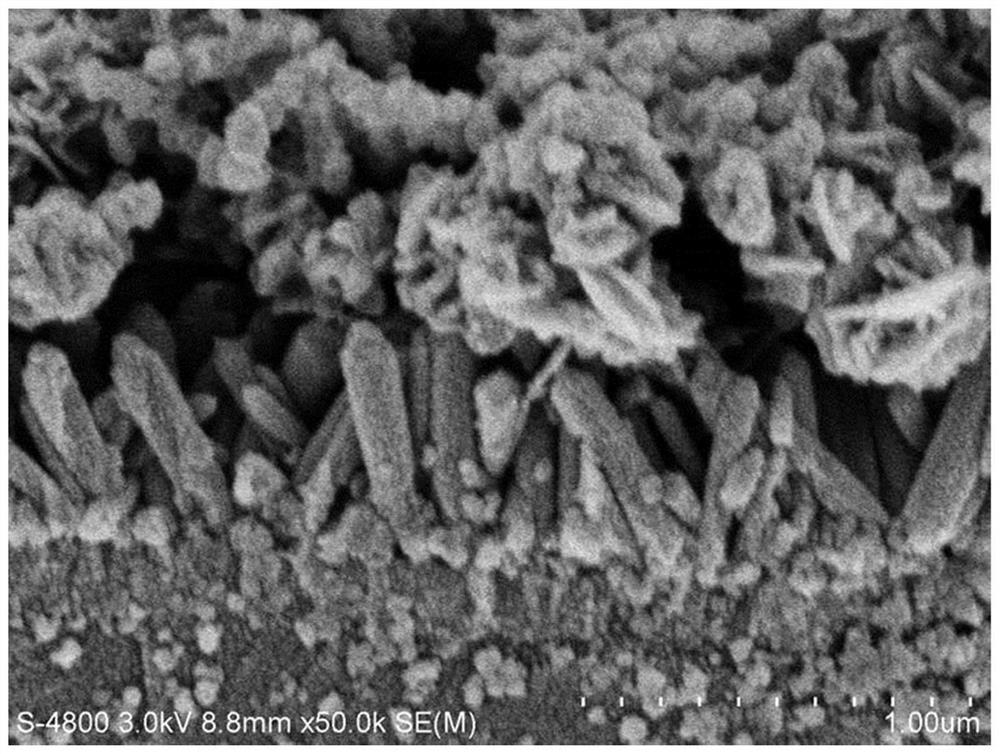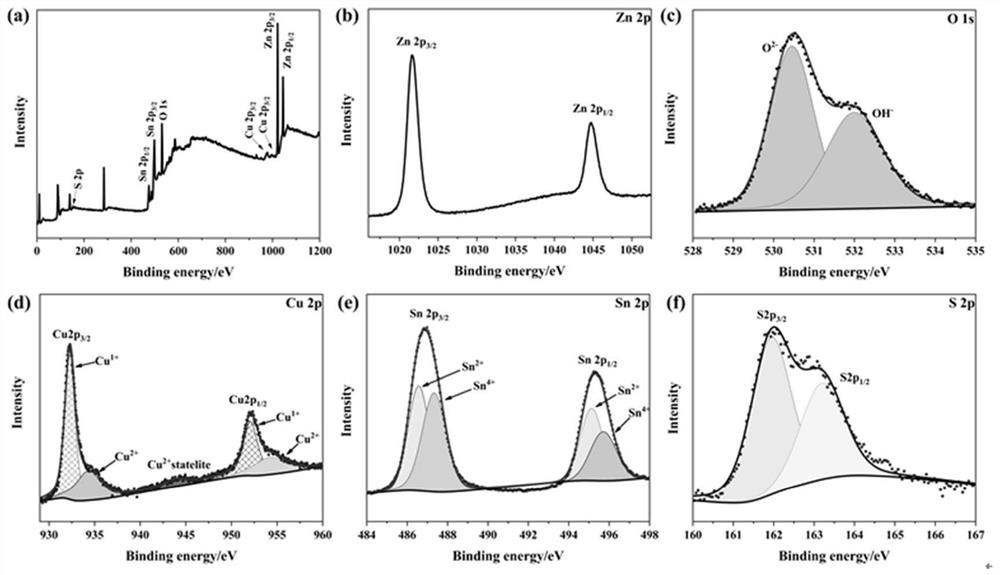P-benzoquinone detection and analysis method based on photoelectric cathode sensor
A photocathode and analysis method technology, applied in the field of analysis and detection, can solve the problems of low sensitivity, high cost of p-benzoquinone detection, complex analysis operation, etc., and achieve the effect of high sensitivity, wide detection concentration range, simple and efficient preparation process
- Summary
- Abstract
- Description
- Claims
- Application Information
AI Technical Summary
Problems solved by technology
Method used
Image
Examples
Embodiment 1
[0039] This embodiment provides a method for preparing a PN-type heterojunction, including the following steps:
[0040] (1) Fix the ITO conductive glass substrate on the glue homogenizer, use a pipette gun to take the ZnO seed layer mother liquid to drip-coat the conductive surface of the ITO conductive glass, and the ZnO seed layer mother liquid is made of Zn(CH 3 COO) 2 It is prepared by mixing with diethanolamine aqueous solution, in which Zn(CH 3 COO) 2 The final concentration of the ZnO seed layer is 0.1mol / L, the final concentration of diethanolamine is 0.1mol / L, and the volume of the ZnO seed layer mother solution is 100μL per square centimeter, and then spin-coated at 300rpm for 1min, and then spin-coated at 3000rpm for 2min , after spin coating, dry at 150°C for 5 minutes, repeat the spin coating and drying steps twice, then anneal at an annealing temperature of 350°C at a cooling rate of 2°C / min, and obtain ZnO seed layer modified ITO after annealing;
[0041] (2...
Embodiment 2
[0046] This example provides Cu 3 SnS 4 The preparation method of / ITO comprises the following steps: at first will contain Cu 3 SnS 4 The precursor solution was heated at 200°C for 12h, centrifuged at 5000rpm for 5min, washed with ultrapure water, and dried at 50°C to obtain Cu 3 SnS 4 powder, then take 20mg Cu 3 SnS 4 The powder was dispersed in 20mL absolute ethanol solution, and after ultrasonication for 20min, Cu 3 SnS 4 powder suspension. Finally, take the suspension and drop-coat it on the surface of the ITO glass slide, each drop-coating volume is 100 μL / cm 2 , after drying at room temperature, repeated drop-coating and drying operation 5 times to obtain Cu 3 SnS 4 / ITO.
Embodiment 3
[0048] This example provides a proof method for PN heterojunction, including a three-electrode system, using ZnO / ITO, Cu 3 SnS 4 / ITO or Cu 3 SnS 4 / ZnO-3 is the working electrode, Ag / AgCl is the reference electrode, and platinum wire is the counter electrode. The working electrode is prepared by the preparation method described in any one of the foregoing Examples 1 and 2.
[0049] Such as image 3 As shown, at pH 7 of 0.1mmol / L Na 2 SO 4 The Mott-Schottky performance test was carried out in solution. From image 3 (a) It can be seen that the capacitance value of ZnO semiconductor is 1 / C 2 In relation to the potential, the slope of the tangent line on the largest straight line of the curve is positive, indicating that the ZnO semiconductor is N-type. image 3 (b) shows Cu 3 SnS 4 Semiconductor capacitance 1 / C 2 The relationship with the potential, the slope of the tangent line on the largest straight line of the curve is negative, indicating that Cu 3 SnS 4 The s...
PUM
 Login to View More
Login to View More Abstract
Description
Claims
Application Information
 Login to View More
Login to View More - R&D
- Intellectual Property
- Life Sciences
- Materials
- Tech Scout
- Unparalleled Data Quality
- Higher Quality Content
- 60% Fewer Hallucinations
Browse by: Latest US Patents, China's latest patents, Technical Efficacy Thesaurus, Application Domain, Technology Topic, Popular Technical Reports.
© 2025 PatSnap. All rights reserved.Legal|Privacy policy|Modern Slavery Act Transparency Statement|Sitemap|About US| Contact US: help@patsnap.com



